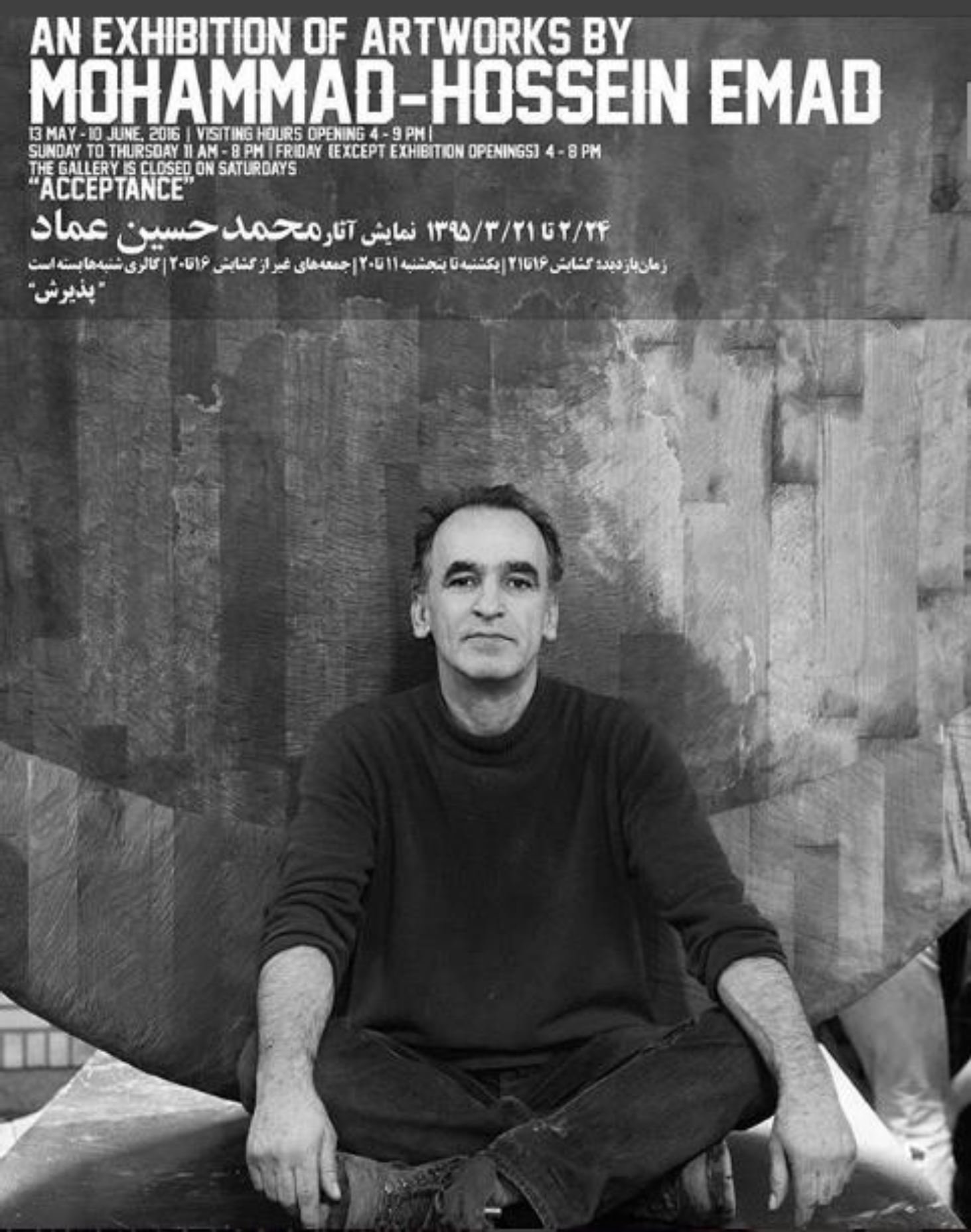Acceptance The Solitude of Emad’s works

Acceptance
The Solitude of Emad’s works
Although there remains little mention of traditional and classic sculptors’ mentality and ways of thinking, during the modern era and especially in the 20th century, many artists have explained their thoughts and works that proved very valuable to later generations and researchers who reflected upon them.
Perhaps, one of the most reputable one of them all is the Realistic Manifesto by brothers Naum Gabo and Antoine Pevsner that was published in 1920. In the title (and statement), ‘realism’ does not have its conventional meaning; instead it is defined as the true essence and the real structure of objects.
Later in 1937, Naum Gabo (1890 – 1977) published an article in the Circle journal entitled “Sculpture Carving and Construction In Space”, which had a fundamental role in terms of explaining the thinking and approach to form and space in contemporary sculpture (and even architecture).
At the beginning of this article, Gabo has outlined two cubes. The first one is a solid cube named Volumetric that is rigid, dense with a three dimensional volume. Below it, there is another cube with its surface split with geometric lines; its primary and uniform space shattered and its outside penetrated into its inside and transformed its known appearance, named Stereometric, meaning: multi-dimensional.
Gabo explains the two designs at the beginning of his article:
‘In the beginning of this article two cubes are presented in order to show two ways of defining the same object: one proportional to carving and the other proportional to building. The important aspect that differentiates them from one another is in the method that has been used in executing them and also the difference in their focal points. One uses solid mass while the other expresses the form’s ‘inner space’ that is visible. The mass and volume of space, in terms of sculpture, cannot have the same identity, and in fact, they are two different materials. Here, I should point out that I am not using these terminologies in a philosophical way; instead I am talking about two real things to which we are connected in everyday life. These two, meaning mass and space, are both real and measurable.
Up to now, sculptors have preferred ‘mass’ to ‘space’ and have neglected or paid little attention to ‘Space’ which is an important component of mass as space. Space in their view is where objects are placed in and become visible. To them, space inevitably surrounds mass. But we consider space from another perspective and consider it as an absolute sculptural element that has abandoned a solid volume and with its specific characteristics show it from within.”
Gabo, in this article, clearly refers to “space” as ‘ an absolute sculptural element” which has released itself from the closed form. He also tries to penetrate into the mass, to split it, to make form transparent and fluid, and to avoid substance as a fixed volume, static, unchangeable and impenetrable.
During different periods in his career, Mohammad Hossein Emad has constantly tried to get into substance, to abandon it from its rigid and solid volume, and to bring space and even atmosphere into a form. With this approach, the audiences are not only engaged with an external form but can penetrate to its inside and even experience space in a void.
In fact, Emad’s attitude towards form and void reminds teachings of philosophers of the Far East. For example, Laozi believes that it is not the walls that make a room; rather, it’s the vacuumed space that conveys the meaning of a room. He also says, that it’s not the edges of a bowl; rather it’s the empty space within it that gives the bowl objectivity.
In expressing the space, Emad has always used these two perspectives; the modernistic concept Gabo explained and also the Eastern worldview expressed by philosophers of that part of the world. In this way, void is also known as an important dynamic quantity.
Written by: Mehdi Hosseini
Winter 2015
